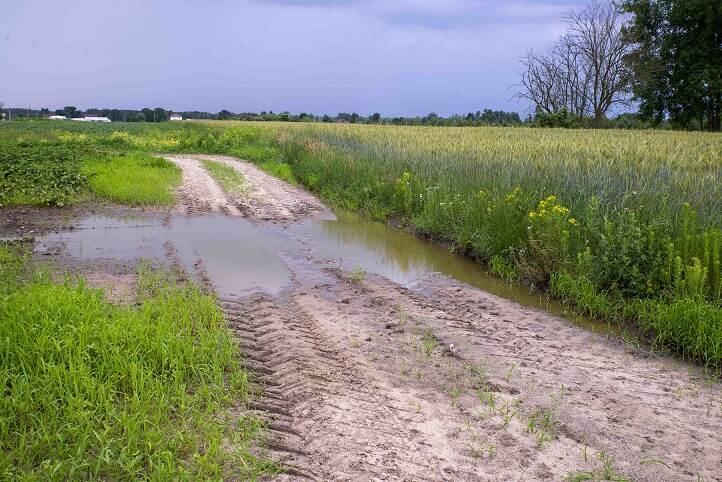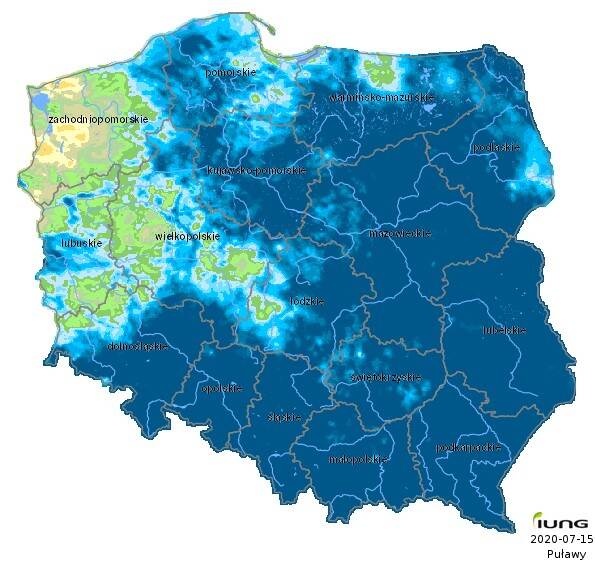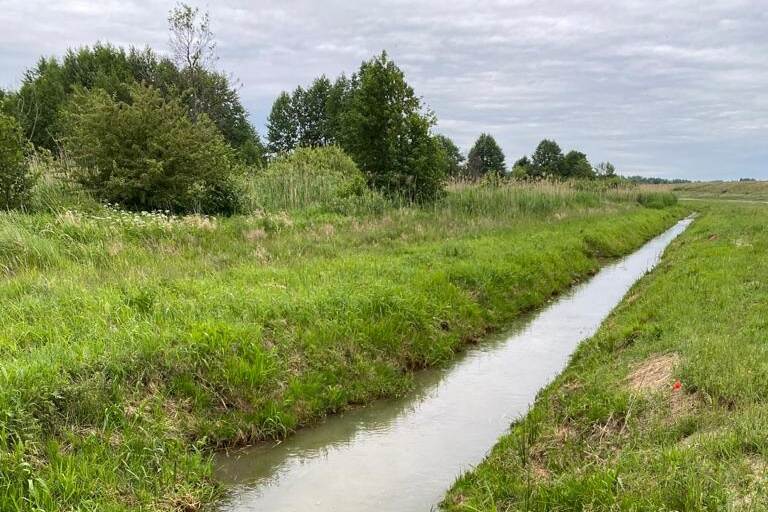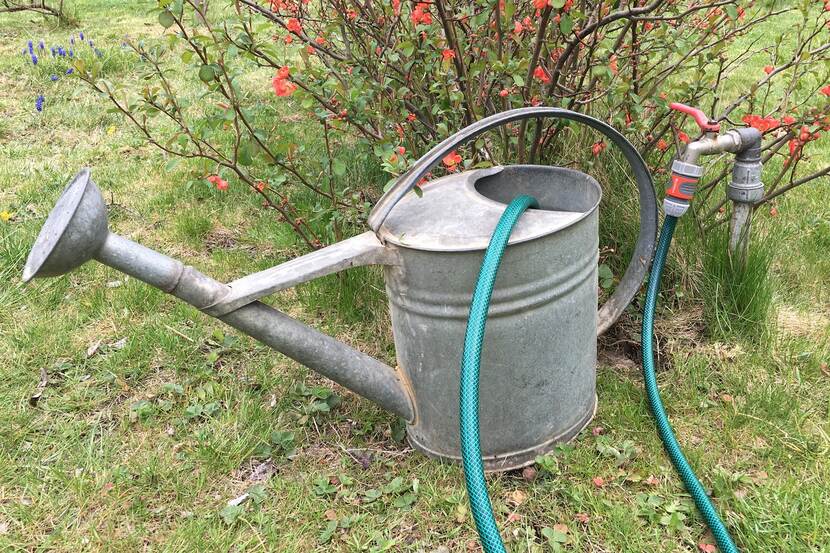Poland: Agricultural drought report
After cold and wet May, warmer June brought again heavy rainfall, which limited the range of agricultural drought in Poland. Nevertheless, Polish Soil Institute still reports drought in the 5 north-western provinces of the country. Additionally, after intensive precipitation and thunderstorms, a large excess of water is recorded in 7 provinces in the southern and central parts of Poland.
Institute of Soil Science and Plant Cultivation (IUNG) determines the current state of agricultural drought risk in all communes in Poland (2477 communes).

In the reporting period from 11 May to 10 July 2020, IUNG noted that the average value of the Climatic Water Balance (KWB), ie. the difference between precipitation and evaporation, was positive and was 24 mm. The number of communes and the percentage of area of arable land with agricultural drought decreased. Only in the rape seed and agrimonia crops the drought range increased. There is still a lack of sufficient rainfall in north-western Poland, which causes large water shortages in the soil in this area. Therefore, the agricultural drought is noted in Zachodniopomorskie, Wielkopolskie, Lubuskie, Dolnośląskie and Pomorskie provinces. To a lesser extent, water shortages are also observed in the Warminsko-mazurskie and Lodzkie provinces.
At the same time, high rainfall in a large area of the country throughout the period in question resulted in an excess of water. A large excess of water is still recorded in the southern part of Poland, in the following regions: Opolskie, Śląskie, Małopolskie, Świętokrzyskie, Podkarpackie, Lubelskie and Mazowieckie.

IUNG finds that the greatest shortages of water for arable crops in the period from 11 May to 10 July occur in north-western Poland, however, they are smaller by 10 to 20 mm compared to the previous sixty-day period (May 1-June 30). In contrast, in the south of the country there was a decrease in the climatic water balance compared to the previous period by more than 20 mm, however in these areas a large excess of water was still recorded, ranging from 100 to even over 200 mm.
The extent of drought in relation to the previous reporting period decreased in the crops:
- spring cereals,
- fruit bushes,
- maize for grain,
- silage maize,
- pulses,
- winter cereals,
- strawberries,
- ground vegetables.

Only in the rape seed and agrimonia crops the drought range increased. Drought in these crops was recorded in 236 Polish communes (9.53% of the country's communes). Compared to the previous reporting period, there was an increase by 85 communes with a drought.
Agricultural drought occurs in the following provinces and crops:
|
Lubuskie |
Zachodniopomorskie |
Wielkopolskie |
Dolnoslaskie |
Pomorskie |
Warminsko-Mazurskie |
Lodzkie |
|
|
Rape seed and agrimonia |
x |
x |
x |
x |
x |
x |
x |
|
Spring cereals |
x |
x |
x |
x |
|||
|
Fruit bushes |
x |
x |
x |
x |
|||
|
Maize for grain |
x |
x |
x |
||||
|
Maize for silage |
x |
x |
x |
||||
|
Pulses |
x |
x |
|||||
|
Winter cereals |
x |
x |
|||||
|
Strawberries |
x |
x |
|||||
|
Ground vegetables |
x |
Crops of potatoes, sugar beets, hops, tobacco and fruit trees are not threatened with agricultural drought.
In May, precipitation varied considerably. The highest was found in the eastern and southern parts of Poland, from 60 to 150 mm, accounting for 100-160% of the long-term norm. On the other hand, the lowest, from 30 to 60 mm, occurred in the north-western part of the country, constituting from 50 to 100% of the norm.

In each decade of June, rainfall over a large area of Poland was high or very high, ranging from 15 to 100 mm (and in the second and third decades even over 100 mm). In the first and second decades, rainfall in the northwest of the country was lower, ranging from less than 5 to 15 mm. This amount of rainfall was recorded in the southern part of Poland in the first decade, and in the second in the east.
Precipitation in the first decade of July was highly variable, with many small areas with high storm rainfall ranging from 20 to over 50 mm. However, particularly low rainfall was recorded in the south-western part of the country, ranging from a few to 10 millimeters.

High rainfall in a large area of the country throughout the period of reporting resulted in an excess of water. Particularly high values of the climatic water balance occurred especially in the southern part of Poland. A large excess of water is still recorded in the following provinces: Opolskie, Śląskie, Małopolskie, Świętokrzyskie, Podkarpackie, Lubelskie and Mazowieckie.
Source: IUNG